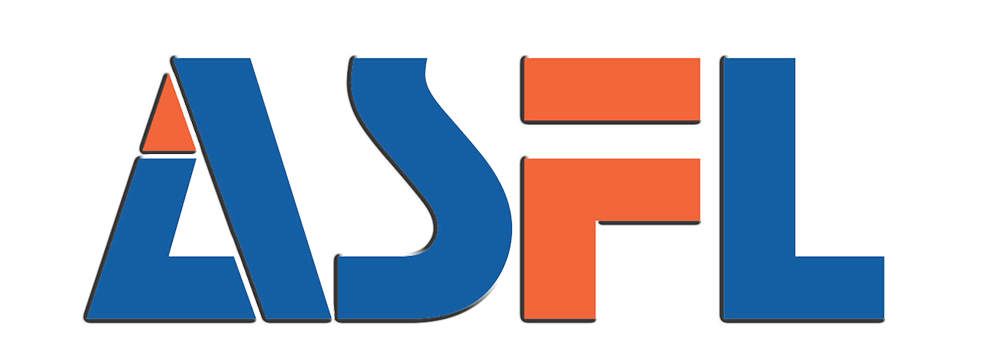Core Components and the 3-in-1 Bottling Process
Working principles of 3-in-1 bottled water filling machines
The latest generation of 3-in-1 water bottle fillers combines rinsing, filling, and capping all in one go. These systems rely on those fancy servo motors we hear so much about these days, which help control everything from the cleaning nozzles to the actual filling process and even how caps get placed properly. No need for workers to jump between different stations anymore. A recent study from packaging experts back in 2024 found something pretty impressive too. When companies switch to these integrated systems instead of separate machines, they see around a 78% drop in mistakes during production. And guess what? Contamination problems basically disappear, down to just 0.3% thanks to their special closed loop sterilization method. That's a game changer for quality control departments everywhere.
Integration of rinsing, filling, and capping in one machine
The machine operates across three precision-engineered zones:
- High-pressure air rinsers eliminate particulates ĂƒÂ¬5ĂŽÂ¼m
- Volumetric filling heads dispense liquid within ±0.5% accuracy
- Torque-controlled cappers apply a consistent 8–12 N·m sealing force
This consolidated design reduces floor space by 40% and achieves 98% operational synchronization between stages, based on data from Modern Bottling Systems Analysis.
Filling machine operation principles and automation hierarchy
Automation is structured in three layers:
- Field devices: Sensors monitor fill levels with ±0.3mm resolution
- PLC layer: Manages up to 120 I/O points for motion control
- HMI interface: Enables parameter adjustments in €2 seconds without halting production
This architecture supports throughput of 500–1,200 bottles/hour with less than 0.8% rejection due to volumetric inconsistency.
Continuous motion vs. intermittent indexing in filling systems
| Parameter | Continuous Motion | Intermittent Indexing |
|---|---|---|
| Speed Capacity | 1,200 BPH | 800 BPH |
| Position Accuracy | ±0.15mm | ±0.5mm |
| Energy Use | 18 kW | 12 kW |
Continuous motion systems are preferred for carbonated beverages, while intermittent indexing serves 72% of still water lines due to reduced foam generation.
Bottle Handling and Automated Conveyor Synchronization
Container Infeed, Indexing, Filling, and Outfeed Process
A four-stage conveyor system streamlines production: bottles enter via an infeed conveyor that spaces them precisely using guide rails. Photoelectric sensors activate indexing mechanisms to align containers under filling nozzles before transferring them to capping stations. Finished products exit seamlessly, supporting speeds up to 24,000 bottles/hour without bottlenecks.
Bottle Positioning Using Conveyor Systems and Rotary Starwheels
Rotary starwheels work in tandem with conveyors to ensure stable, high-speed transfer. Made of stainless steel, their custom pockets hold bottles securely during transitions. When combined with servo-driven controls and adjustable rails, these systems achieve positional accuracy within ±0.5 mm—critical for spill-free filling.
Synchronization of Bottle Indexing With Filling Nozzles
Programmable logic controllers (PLCs) use encoder feedback to align starwheel rotation with nozzle activation, ensuring filling heads engage only when bottles are perfectly positioned. This synchronization reduces liquid waste by 12–18% and enables simultaneous filling of 24–48 bottles while maintaining ISO 9001 standards for volumetric consistency.
Precision Liquid Filling: Methods and Accuracy Control
Servo-Driven Pumps and Precision Control for Consistent Fill Levels
Servo-driven pumps, managed by PLCs, maintain ±0.5% volume tolerance by dynamically adjusting flow rates (5–100 mL/sec) and nozzle pressures (1–10 bar). Low-viscosity liquids typically use 2–4 mm nozzles at 1–3 bar, while higher-viscosity fluids require narrower nozzles and elevated pressure to minimize foaming.
Accuracy and Consistency Through Volumetric Measurement
Advanced systems use real-time flow meters and sensors to track liquid displacement, with laser-guided tools detecting deviations as small as 0.1 mL. This ensures compliance with FDA and ISO standards and reduces annual product giveaway by 1.2% compared to timed filling methods, according to 2023 packaging efficiency studies.
Automated Bottle Filling Mechanisms and Volumetric Control Methods
Different products demand specialized filling mechanisms: piston fillers for creams, peristaltic pumps for abrasive fluids, and gravity-fed nozzles for carbonated drinks. Testing by a leading manufacturer in 2024 showed rotary piston fillers achieving 99.8% accuracy over 10,000 cycles, thanks to wear-resistant seals capable of handling particulates up to 500 microns.
Gravity vs. Pressure-Based Filling: Comparing Accuracy and Efficiency
| Method | Best For | Accuracy | Speed (bottles/min) |
|---|---|---|---|
| Gravity | Low-viscosity | ±1% | 80–120 |
| Pressure | High-viscosity | ±0.75% | 40–80 |
| Gravity systems suit water and juices, while pressure-based methods handle oils and shampoos more effectively. Hybrid models now combine both approaches, reducing energy consumption by 18% without sacrificing precision. |
PLC Automation and Real-Time Monitoring in Filling Systems
Programmable Logic Controllers in Bottling and HMI Controls
Programmable Logic Controllers serve as the brains behind modern bottling lines, managing everything from rinsing bottles to filling them with liquid and then applying caps, all within about half a percent accuracy according to Fillers-Packer research from last year. These controllers run through logical instructions to tweak operations on the fly. For instance, they can change how fast servos move when detecting different types of bottles coming down the line. At the same time, Human Machine Interfaces offer operators easy-to-read screens where they can check things like system pressure levels, machine speeds, and track any errors that occur during production. When companies switch from old electromechanical systems to these integrated solutions, workers end up needing to step in manually roughly three times less often than before.
Integration of PLC Automation, HMI, and Sensor Networks
Three interconnected components ensure precision:
- PLC networks manage pneumatic valves and filling sequences
- Vision sensors verify bottle position within 0.1mm tolerance
- HMI dashboards display live throughput and quality metrics
Analysis of 45 bottling lines revealed that facilities using integrated PLC/HMI/sensor systems achieve 98.6% uptime, significantly outperforming manual operations at 84% (McKinsey 2022). These closed-loop systems enable self-correction of fill volumes through continuous feedback from encoders and flow meters.
Filling Confirmation With Sensors and Real-Time Error Detection
Modern infrared sensors paired with load cells can run anywhere between 12 to 15 quality checks each second, catching those underfilled bottles right before they get capped. A major pharma company actually managed to slash their waste by around 40 percent once they implemented laser guided fill verification systems on their production lines. When errors occur, these systems log them in real time and either automatically recalibrate themselves or stop the conveyor belt entirely, which helps prevent whole batches from getting contaminated. According to recent industry research, these kinds of automated safety measures work about 23 percent better than what humans can achieve during manual inspections. Most PLC controlled systems manage to fill each 500ml bottle with between 499.5 and 500.5 milliliters, maintaining this precision across roughly 99 out of every 100 production runs while keeping up a steady pace of about 180 bottles per minute.
Hygiene, Capping, and End-to-End Line Integration
Maintaining Hygiene and Consistency in Automated Filling Environments
Stainless steel construction and CIP (Clean-in-Place) protocols ensure compliance with FDA and ISO 22000 standards. Automated rinsing stations pre-treat bottles with food-grade disinfectants, removing 99.7% of microbial contaminants (Journal of Food Engineering, 2023). By minimizing human contact by 85%, these closed-loop systems maintain sterility and consistency across batches.
Automated Capping Systems With Cap Feeding and Torque Control
Servo-driven cappers apply precise torque (0.5–8.0 Nm) tailored to PET, glass, or aluminum caps. Vibration bowls orient caps at rates of 120–300 units/minute, and optical sensors confirm alignment before application. Industry data shows automated torque control reduces under- or over-tightened caps by 92% versus manual processes.
Integration of Filling, Capping, and Labeling for Full Automation
PLC networks synchronize key stages:
- Timing: Filling nozzles retract 0.8 seconds before capping begins
- Positioning: Rotary starwheels maintain ±0.5mm alignment
- Traceability: Laser coders imprint batch information within 0.3 seconds post-capping
This seamless workflow supports speeds up to 12,000 bottles/hour and maintains 99.4% OEE (Overall Equipment Effectiveness) in optimized environments.
FAQ
What is a 3-in-1 bottled water filling machine?
A 3-in-1 bottled water filling machine integrates rinsing, filling, and capping into one machine, streamlining the bottling process and reducing potential errors.
How accurate are the fill levels in these machines?
The fill levels are highly accurate, maintaining a ±0.5% volume tolerance through the use of advanced servo-driven pumps and real-time monitoring systems.
What types of liquids can the 3-in-1 machine handle?
The machine is capable of filling both low-viscosity and high-viscosity liquids through adjustable nozzles and pressures.
How does automation improve bottling efficiency?
Automation reduces human involvement, maintains hygiene, enhances fill accuracy, and improves line synchronization, leading to less wastage and higher productivity.





